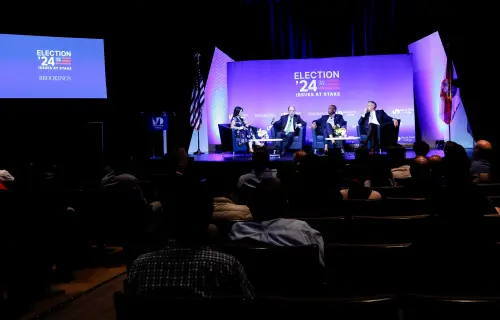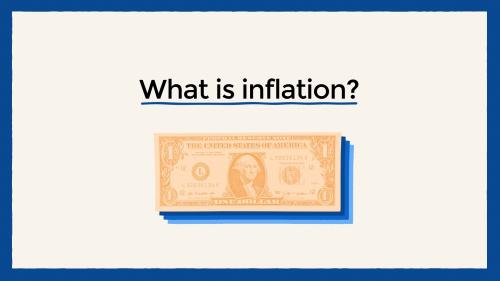A government’s arsenal for moderating business cycles consists of fiscal and monetary policy. But the U.S. has little scope for using either if a new recession should now emerge. The Fed has only limited options left for stimulating the economy. And political gridlock may prevent any timely injection of fiscal stimulus. How big are the risks we face, and are we really out of options?
Fortunately, continued expansion is the central forecast for the U.S. economy today. Janet Yellen’s public assessments of the outlook are screened less for signs that the economy may need renewed policy easing and more for clues about when the next rate increase will come. But economic forecasts come with a considerable range of uncertainty, and the downside risk is greater if policies cannot be counted on to respond.
Monetary policy is not out of stimulus options, but they are limited. The recovery of the U.S. economy from the Great Recession owes a lot to the Fed’s aggressive and creative use of monetary policy under the leadership of both Ben Bernanke and Janet Yellen. This included dropping the short-term policy interest rates to zero and the quantitative easing program in which the Fed bought large amounts of longer-term securities, including private mortgages as well as government bonds. The recovery would not have been as successful without these policies, especially when foreign economies were weaker and their interest rates even lower. But having already taken these steps, there is now less room to do still more.
For a start, short-term rates could be pushed back to zero or even be made moderately negative, say minus 0.25 percent. As odd as it may seem to pay a bank to hold your money, or your firm’s money, short rates are already negative in Japan and much of Europe. Nonetheless, rates could go only slightly negative without causing serious problems for some financial institutions. And that would not be enough. In fighting past recessions, the Fed has promoted declines of 5 percentage points or more in short term rates. A half-percentage point decline would be far too little to matter much in a new recession.
The Fed could also return to its QE program. And it could do more by buying bonds so as to directly peg longer term rates, which could require much larger purchases than the QE program made. During World War II and its aftermath, the Fed pegged bond rates because the aim of policy was to hold down the Treasury’s borrowing costs. In the Accord of 1951, it obtained the independence to direct policy at stabilizing the economy. Pegging long bond rates now would be a more forceful policy than just pegging short term rates. But with 10-year Treasuries already yielding less than 2 percent, the monetary stimulus available from pegging them lower would be limited.
This leaves fiscal policy as the main tool now available for fighting recession. In a normal political climate, we would expect Congress and the President to come up with some quick and strong fiscal response to any new downturn, as they did in 2009. But there is little chance of such cooperation in today’s political climate, and this year’s elections could continue the political gridlock.
Congressional willingness to take countercyclical steps that boost the deficit may be further reduced by the widespread agreement about the need to reign in the growing national debt n for the long run: Under current policies the Congressional Budget Office projects debt as a percent of GDP rising from 75 percent this year to 86 percent in 2026, and continually higher thereafter. There is no conflict between reigning in our growing debt in the long run and using countercyclical policies when they are needed. But that is a more complicated political speech to give than one that ignores the difference.
Europe is even more at risk and more in need of expansionary fiscal policies. And the hurdles are greatest among the Euro Zone economies where the flexibility to set separate fiscal policies is severely constrained.
Euro zone interest rates are already negative. And Draghi’s European Central Bank, with the permission of Germany and other Euro zone nations, is presently buying bonds to finance member nations’ deficits arising from the deep recession. As last year’s showdown over Greek deficits showed, adding fiscal stimulus to the depressed nations’ budgets is not permitted under present understandings.
If Germany allowed the use of fiscal stimulus, it would greatly enhance the usefulness of ECB bond purchases and the effectiveness of policies to fight recessions in the Euro zone. It would reduce today’s economic risks and would also strengthen the Euro zone structure for the future.
Unfortunately, the chance of getting this move toward greater integration within the Eurozone seems, if anything, smaller than the chance the U.S. Congress and the President will cooperate over fiscal policy next year.
Editor’s note: This piece originally appeared in Real Clear Markets.



Commentary
Op-edIs there any ammo left for recession fighting?
April 21, 2016